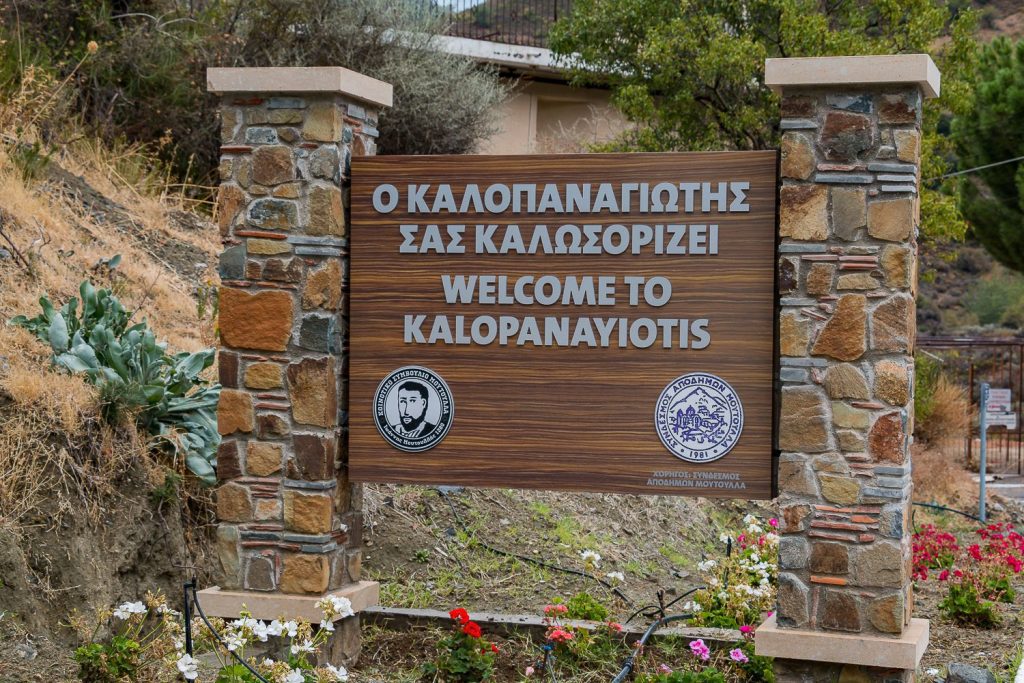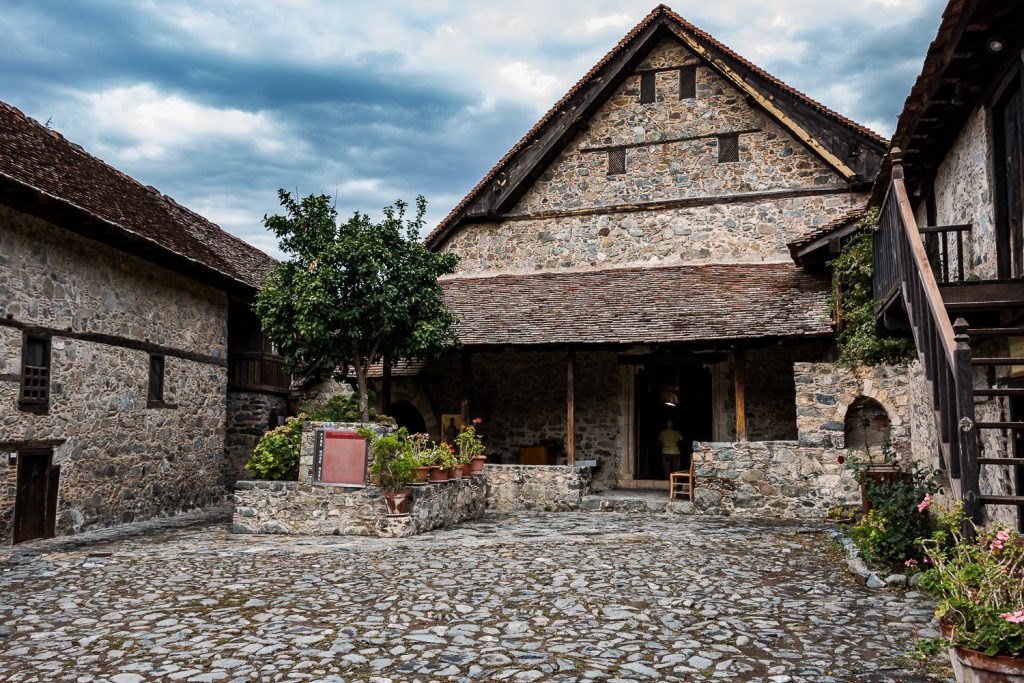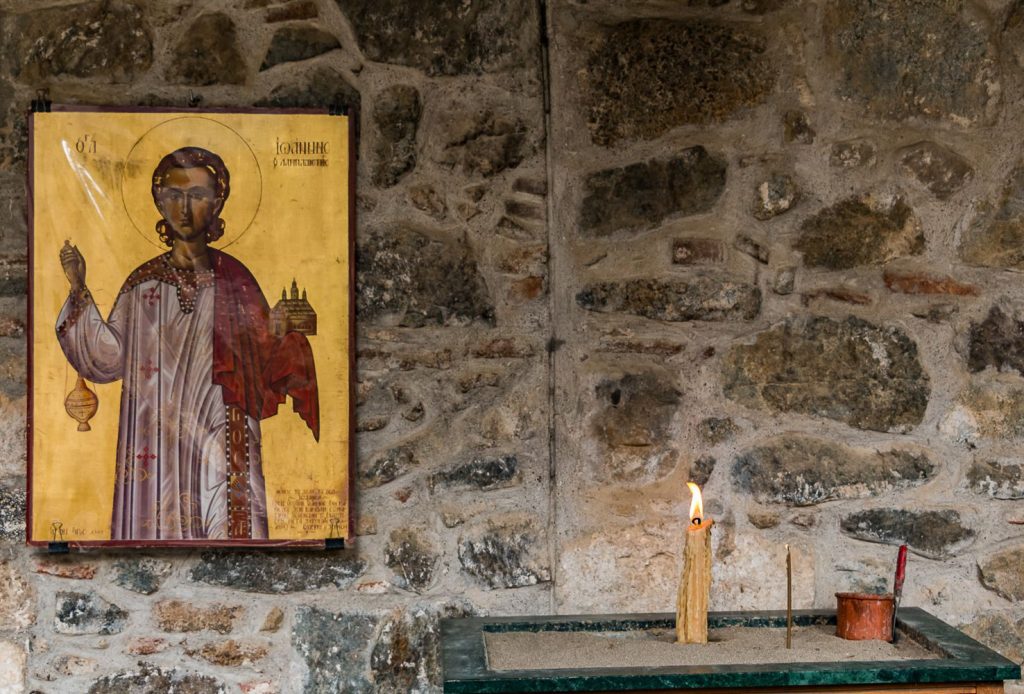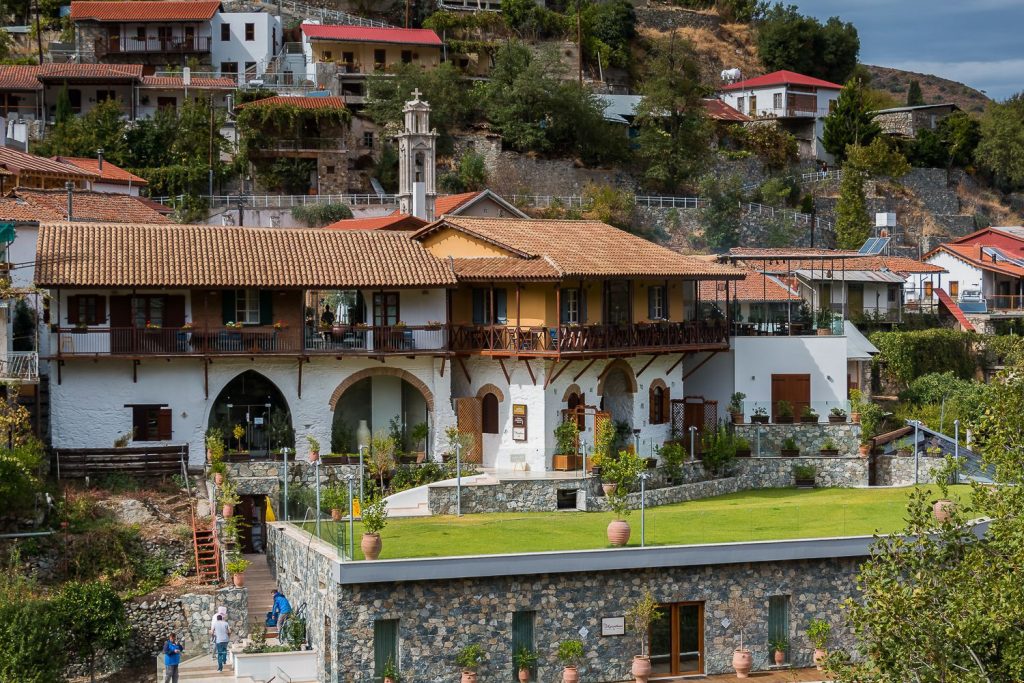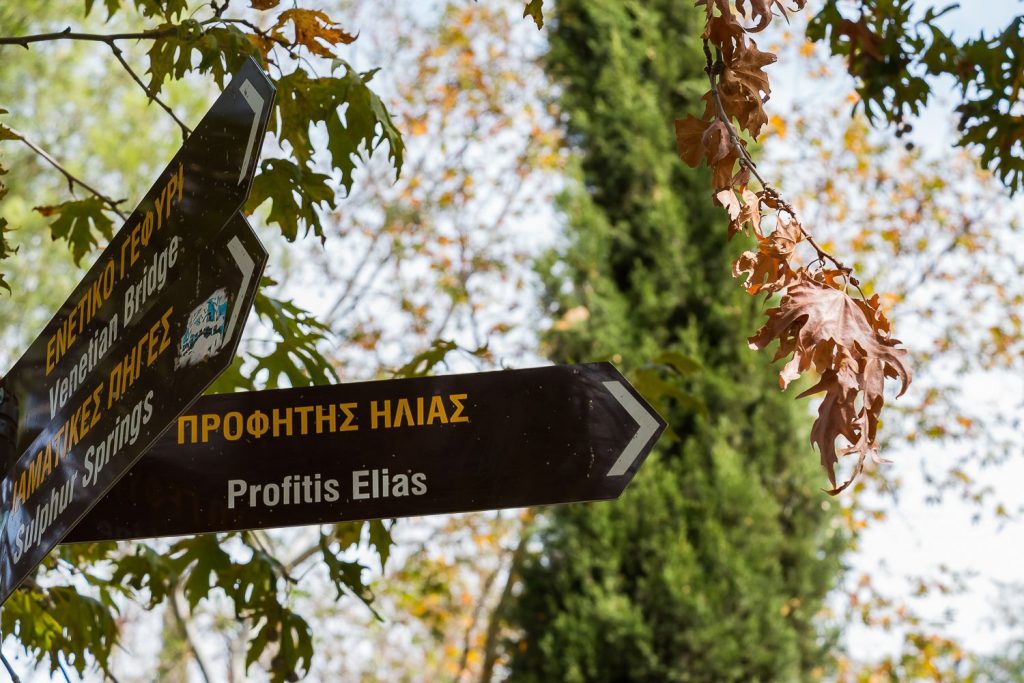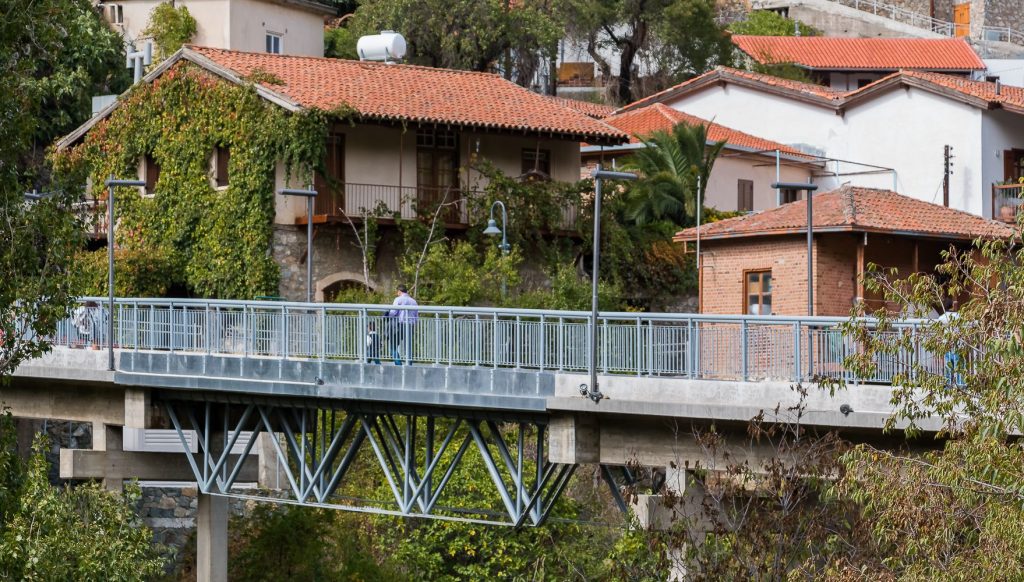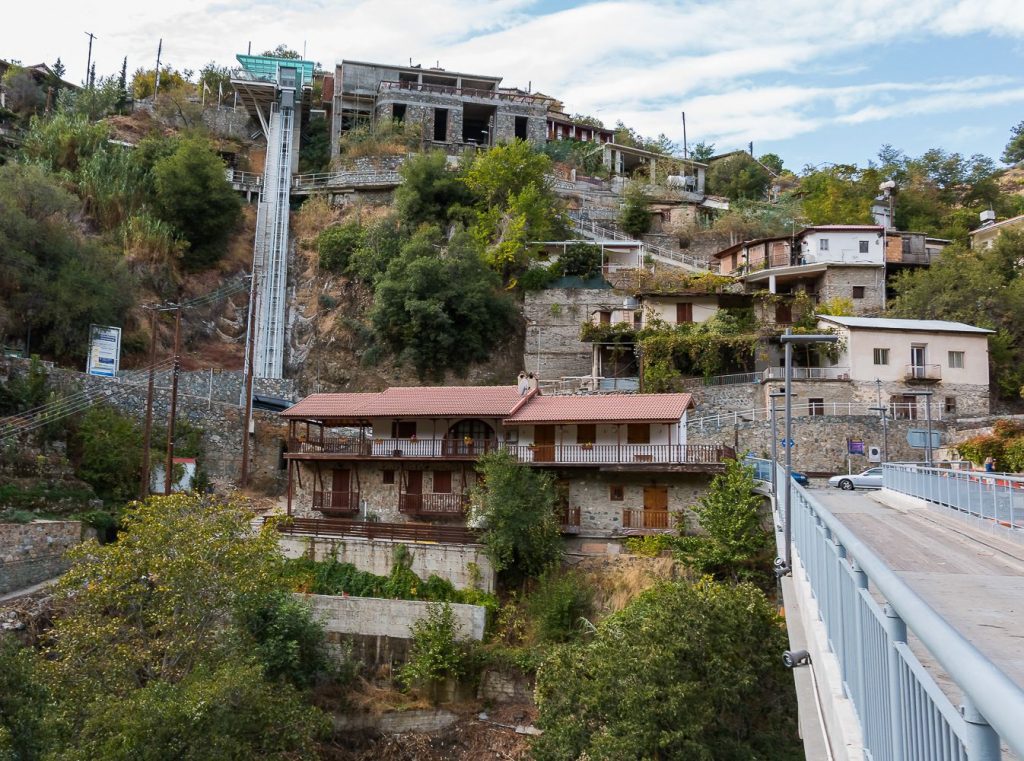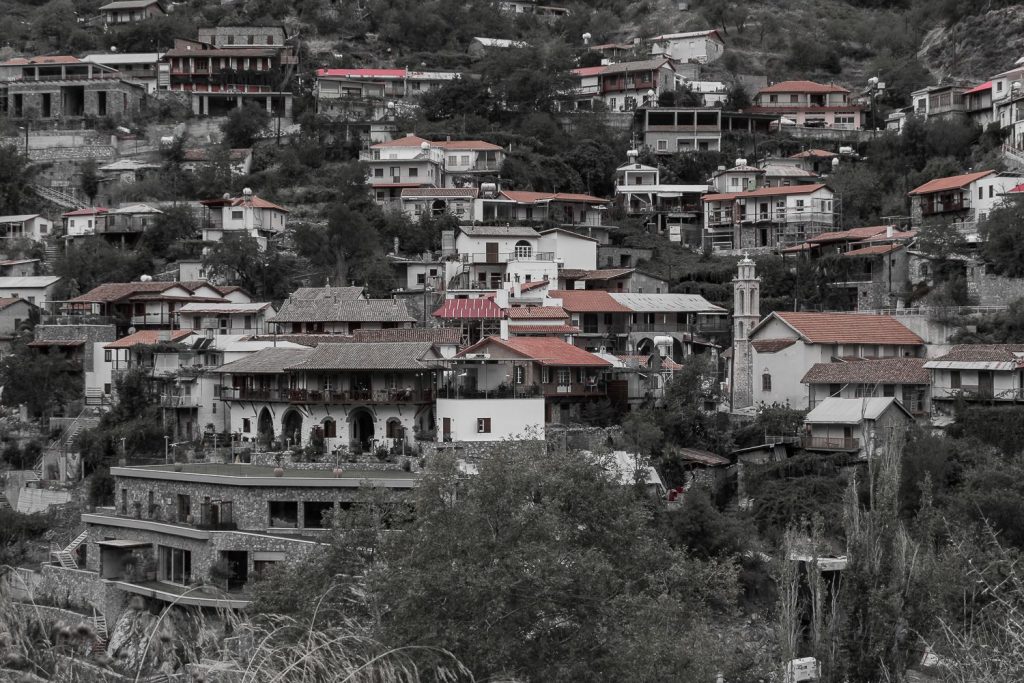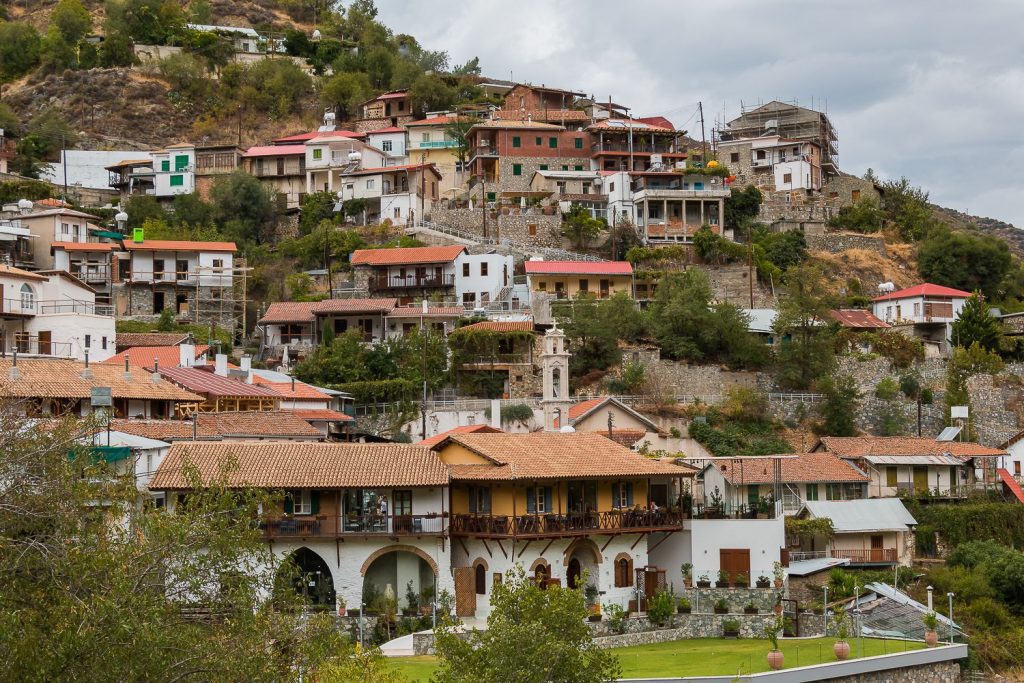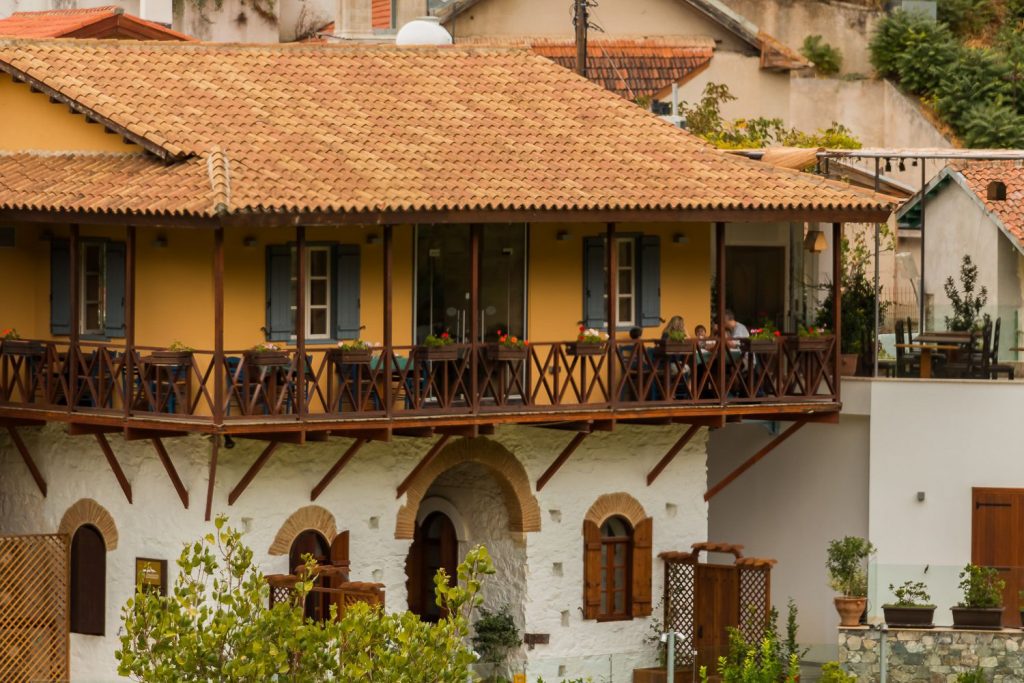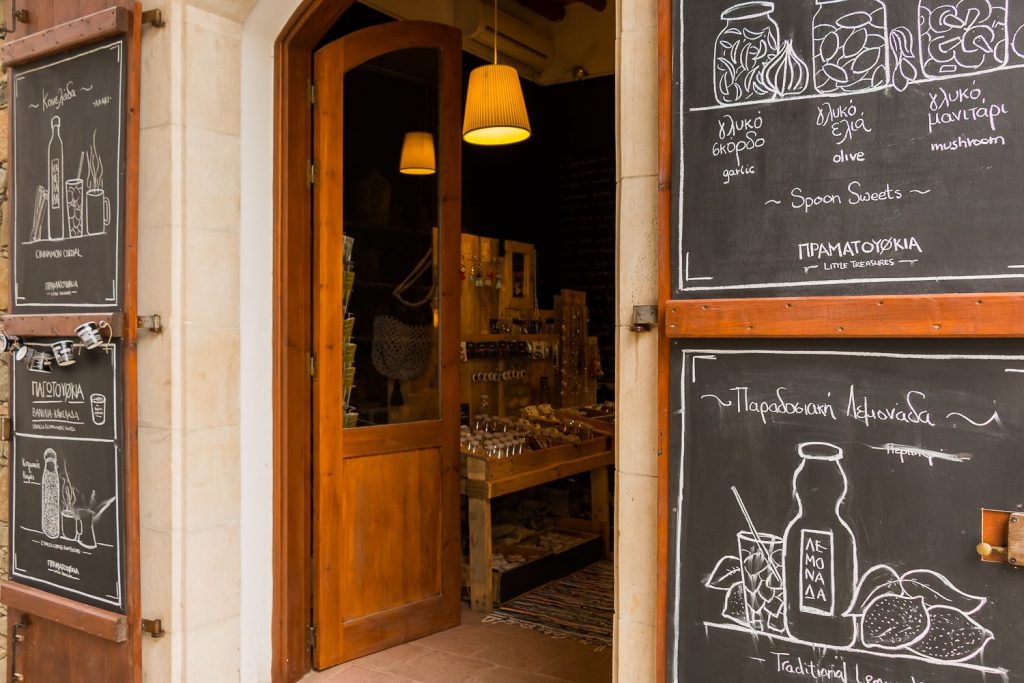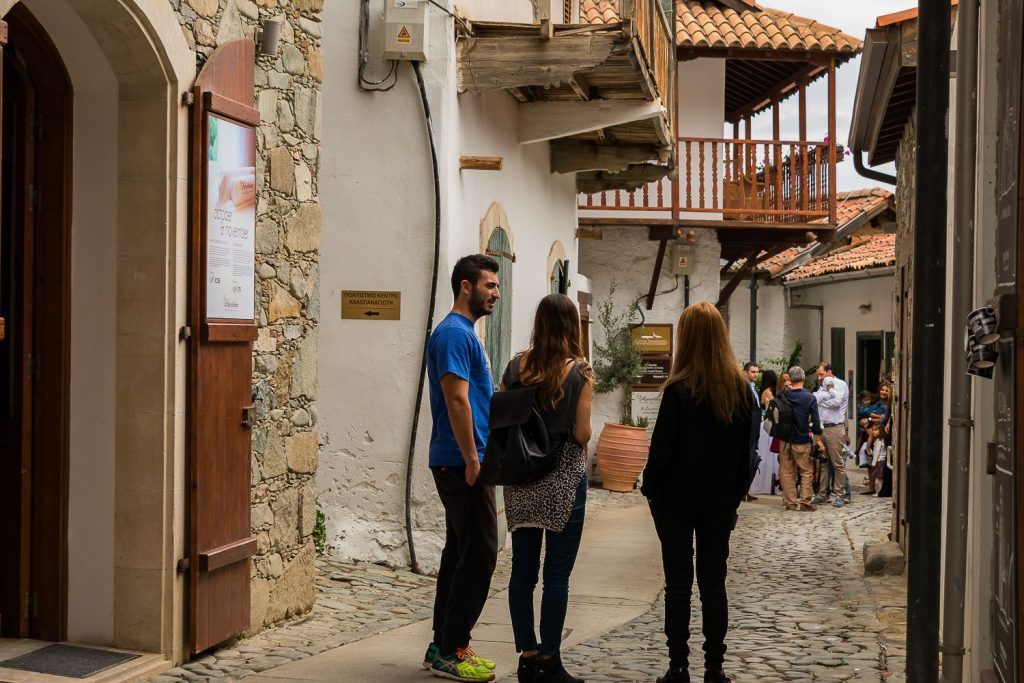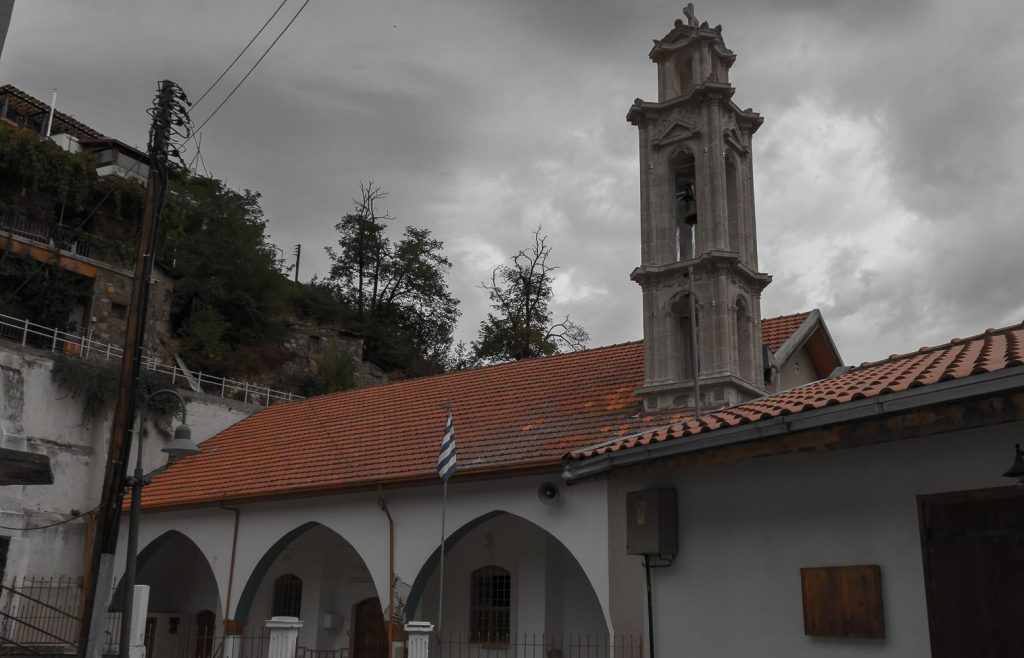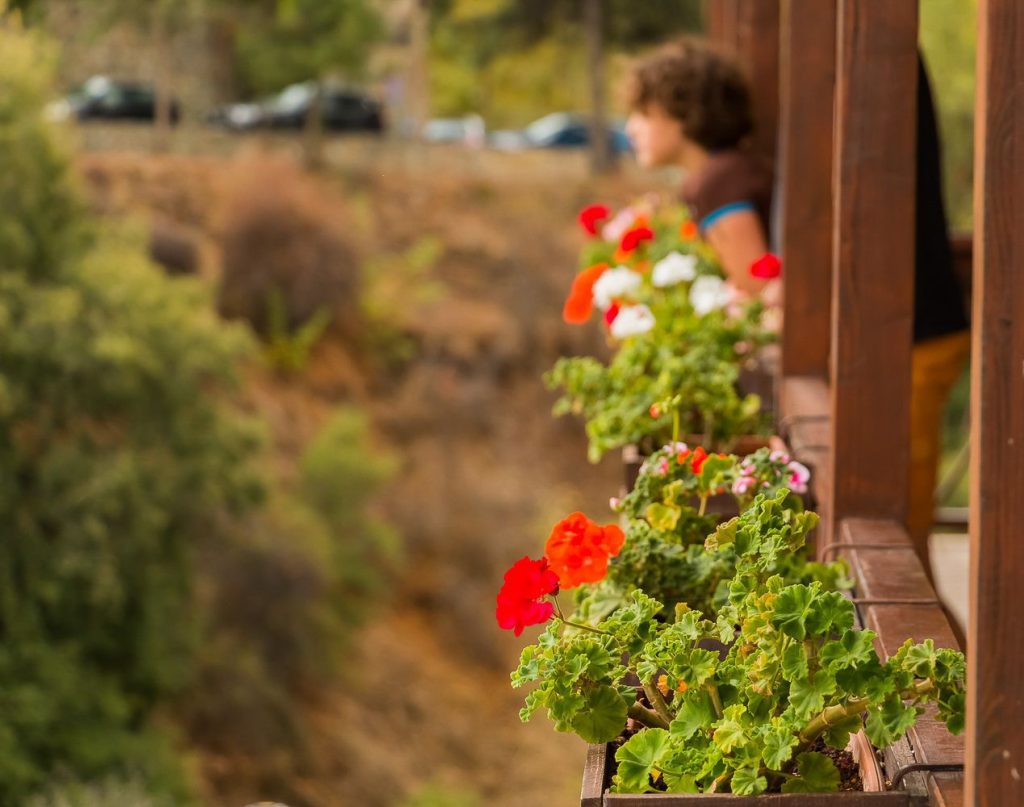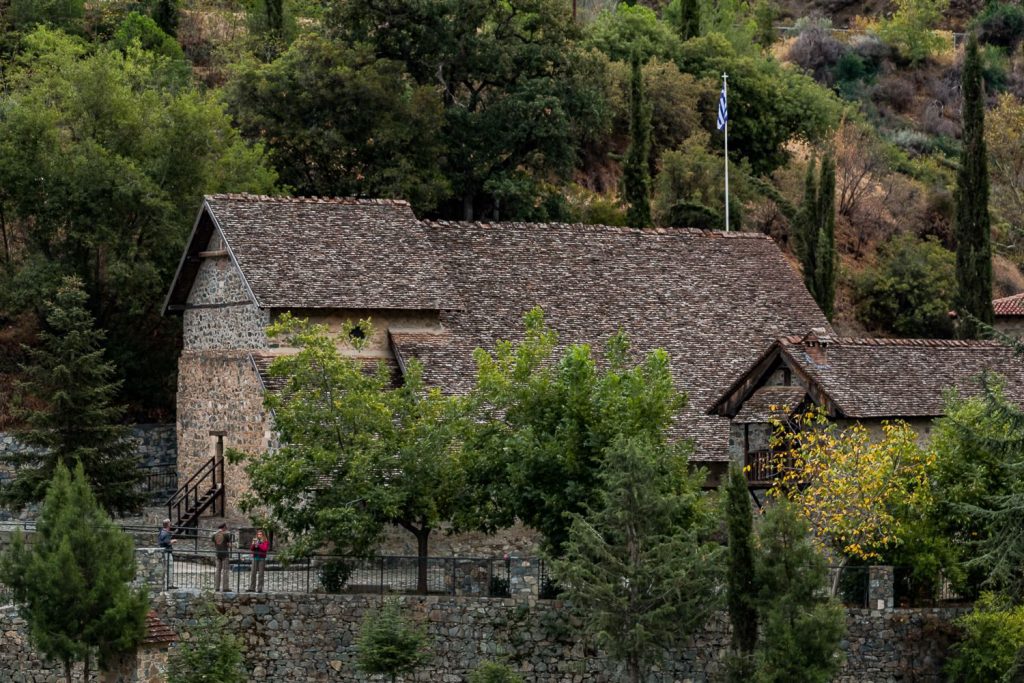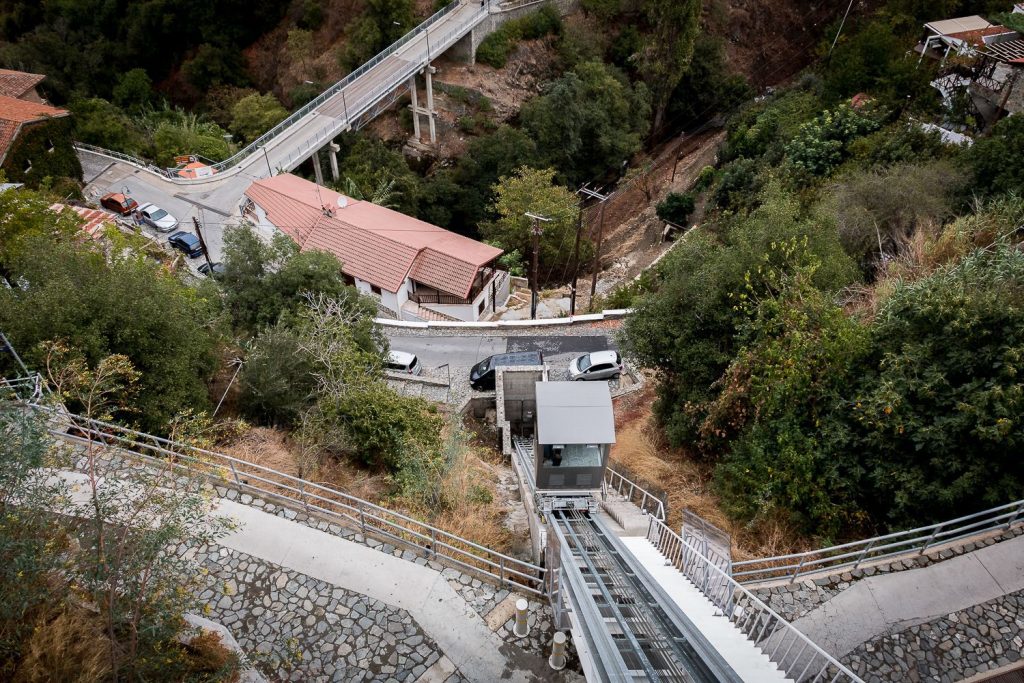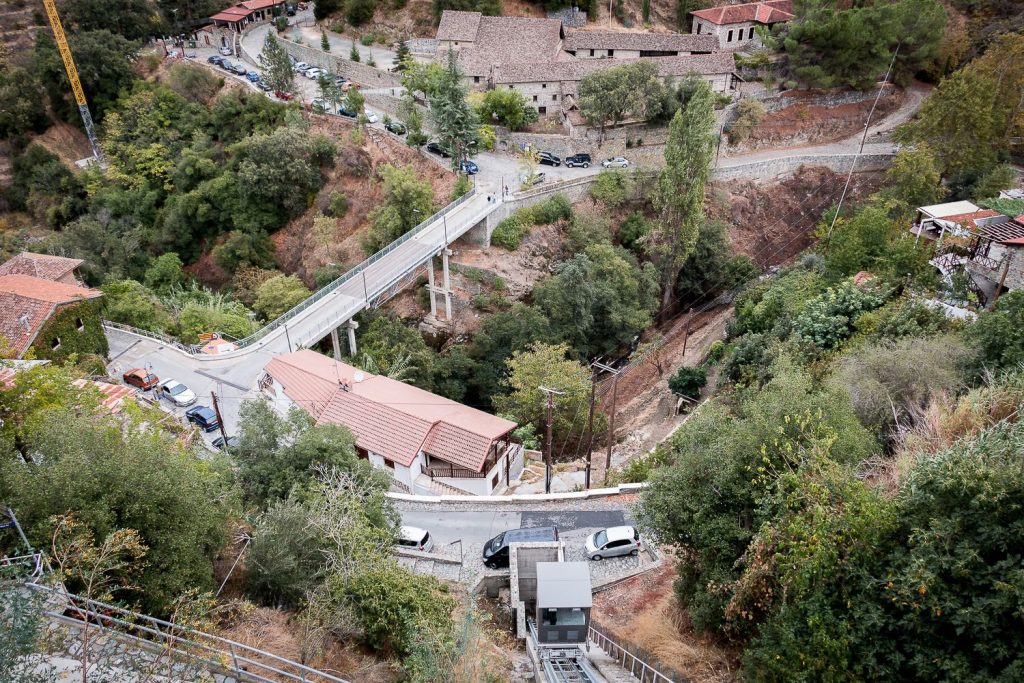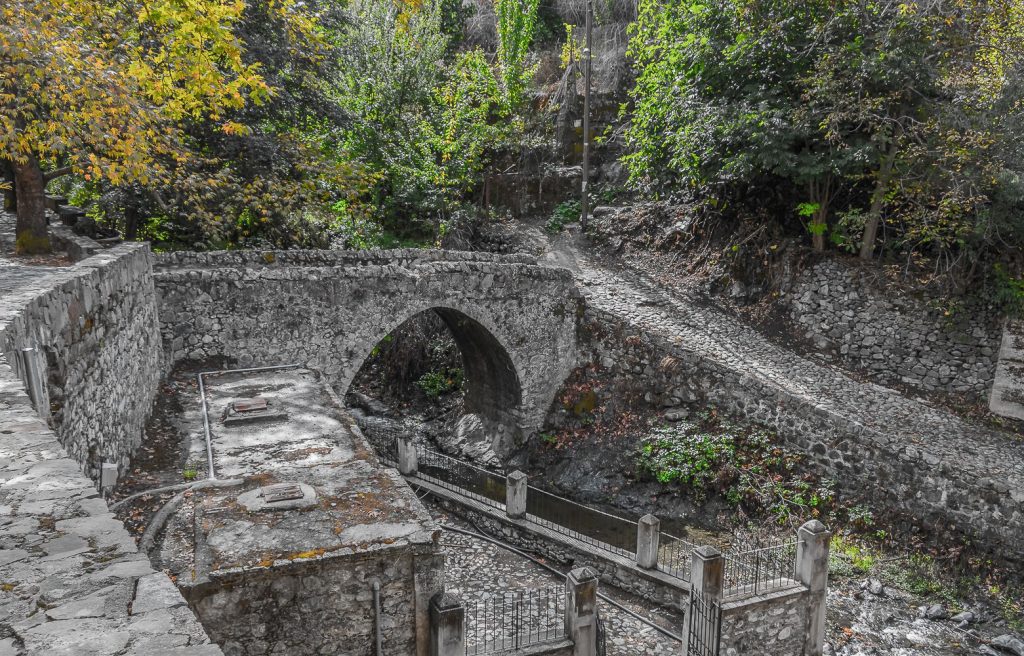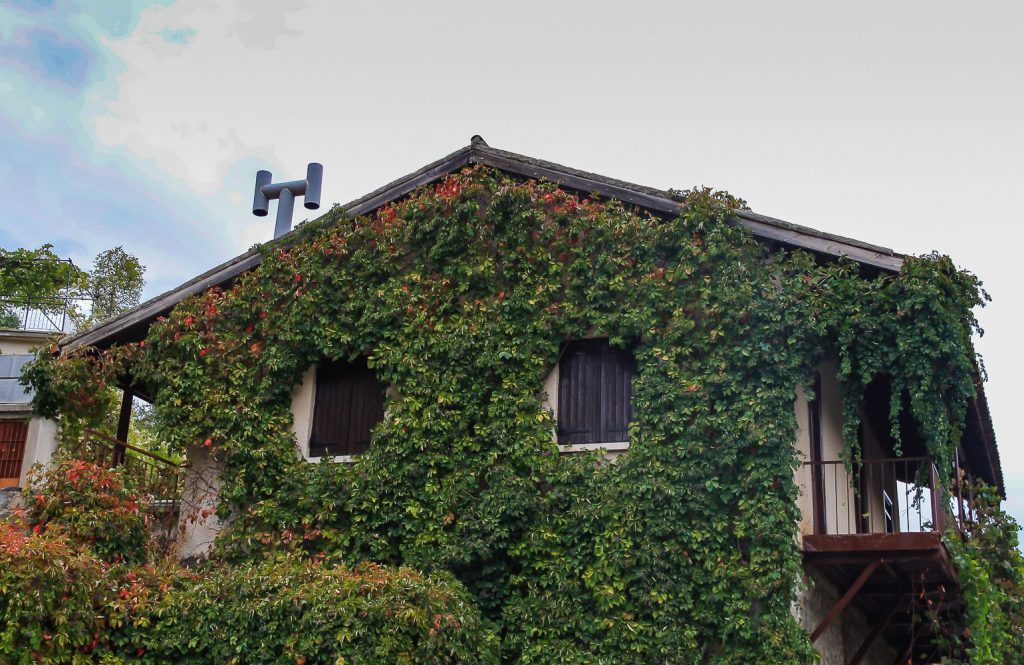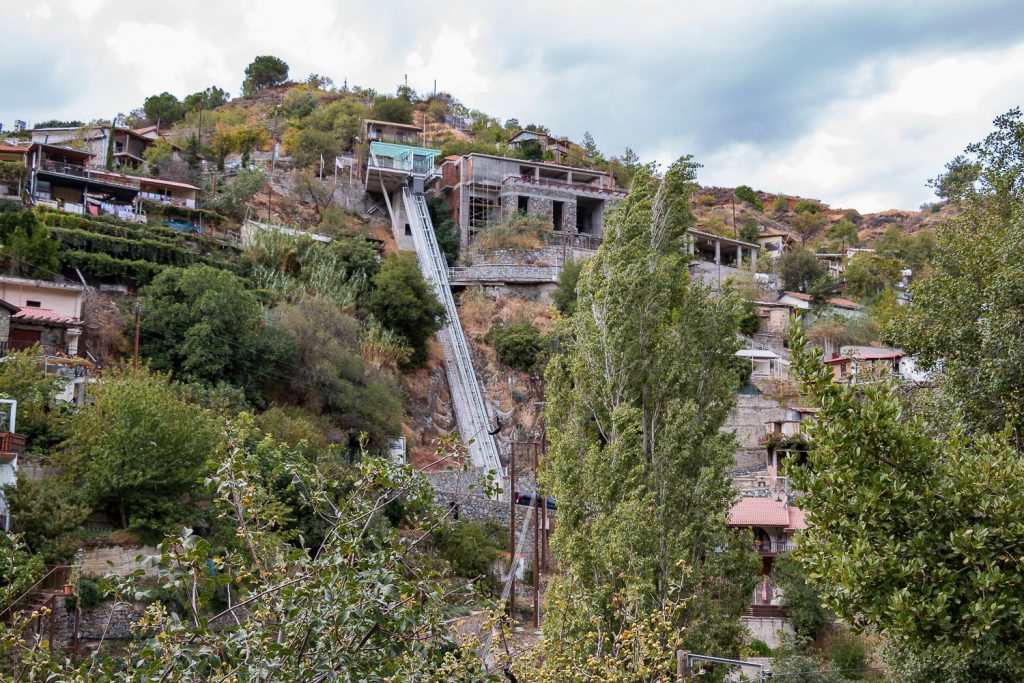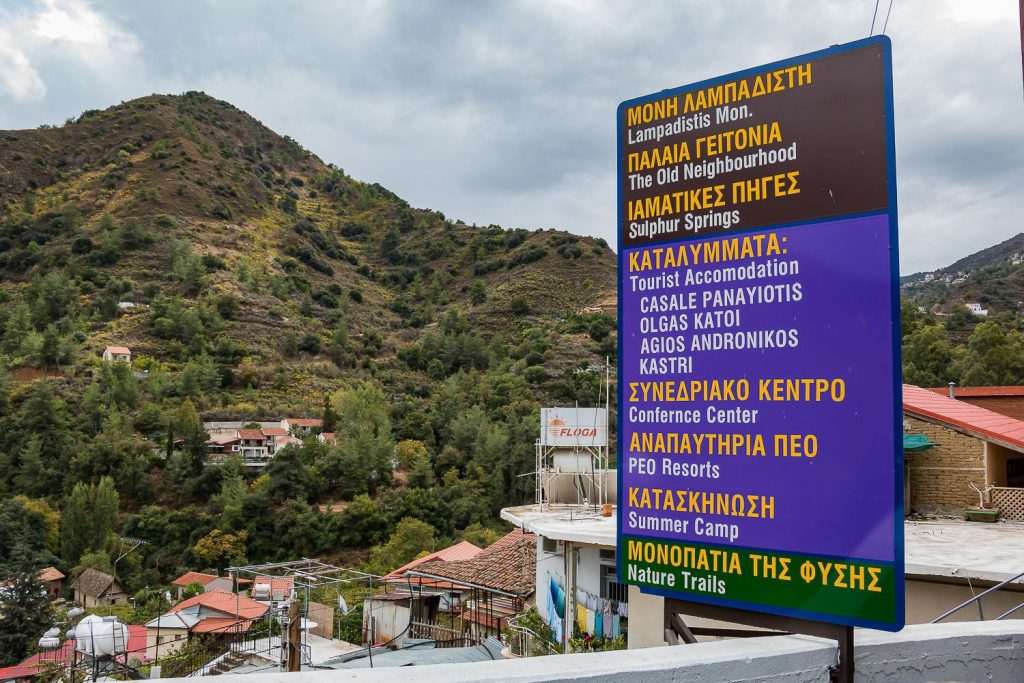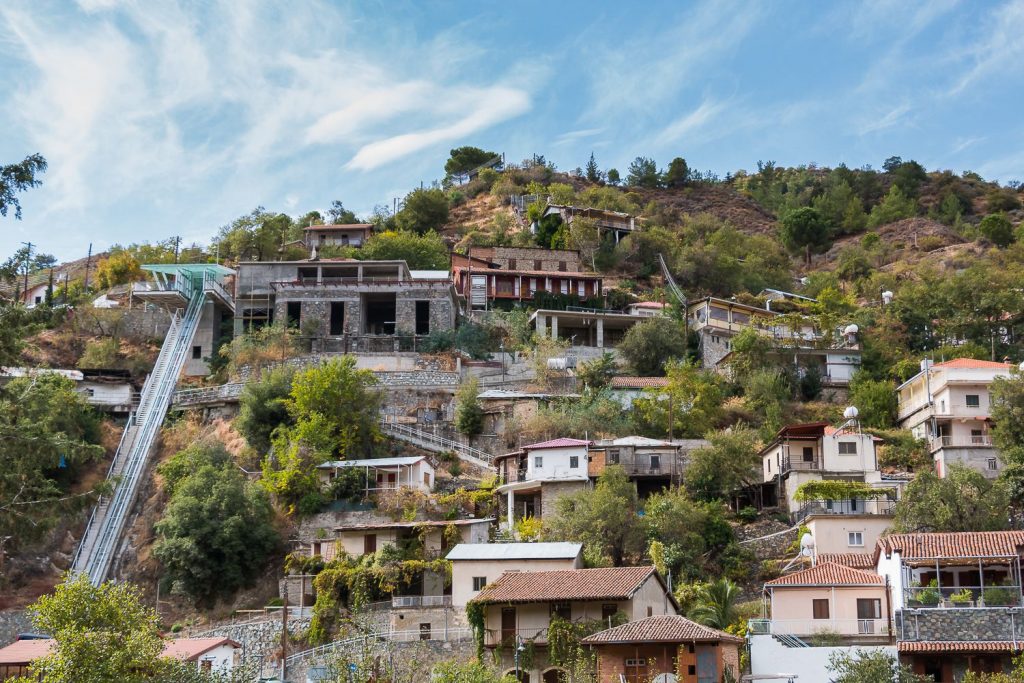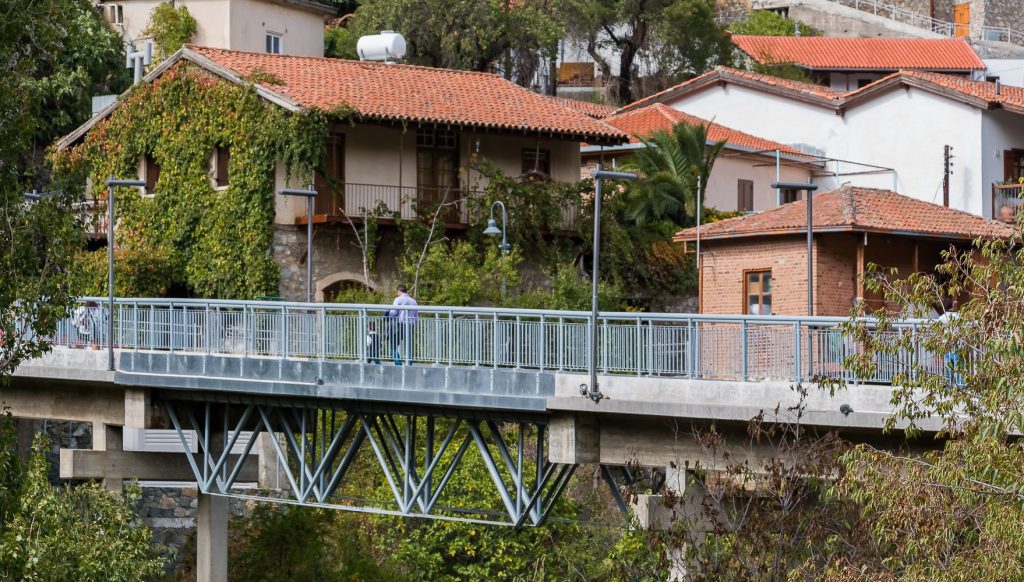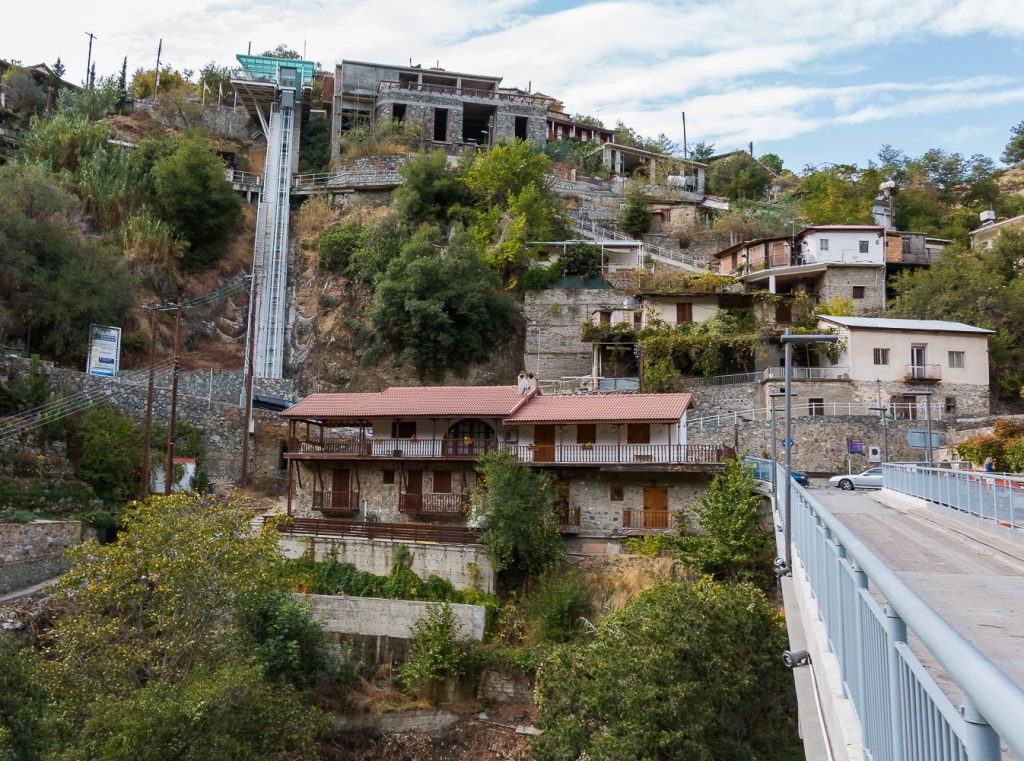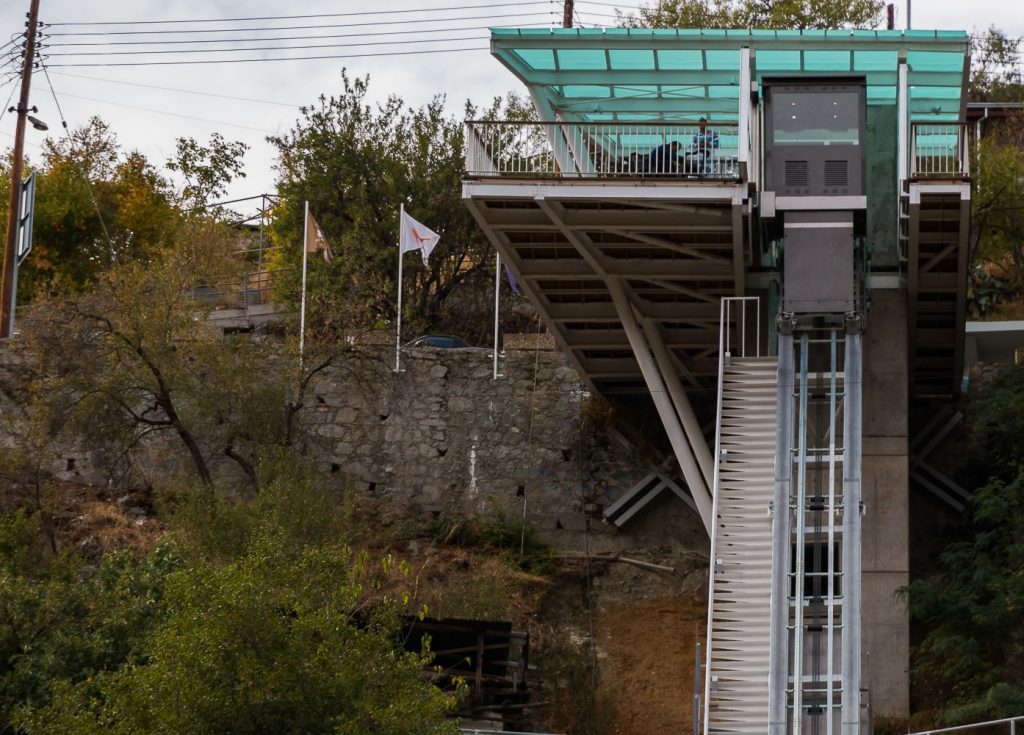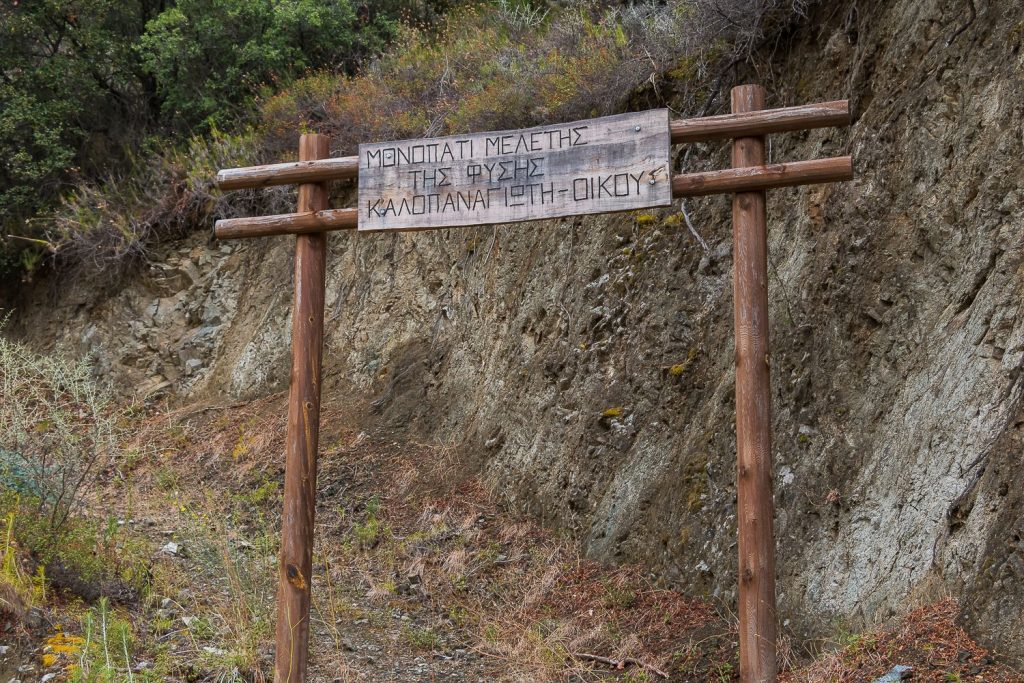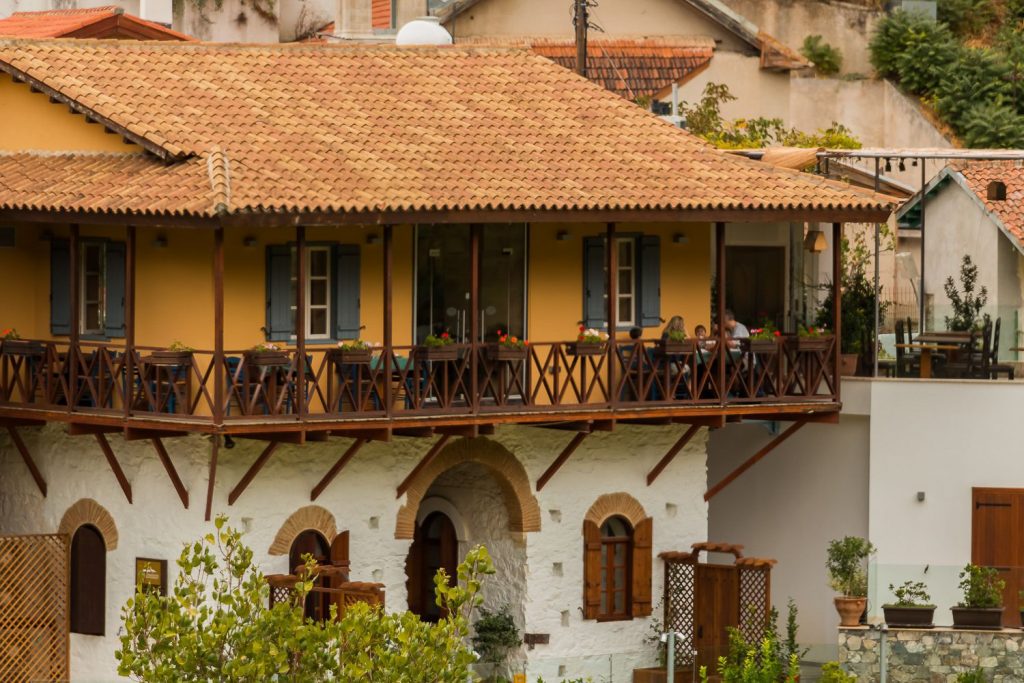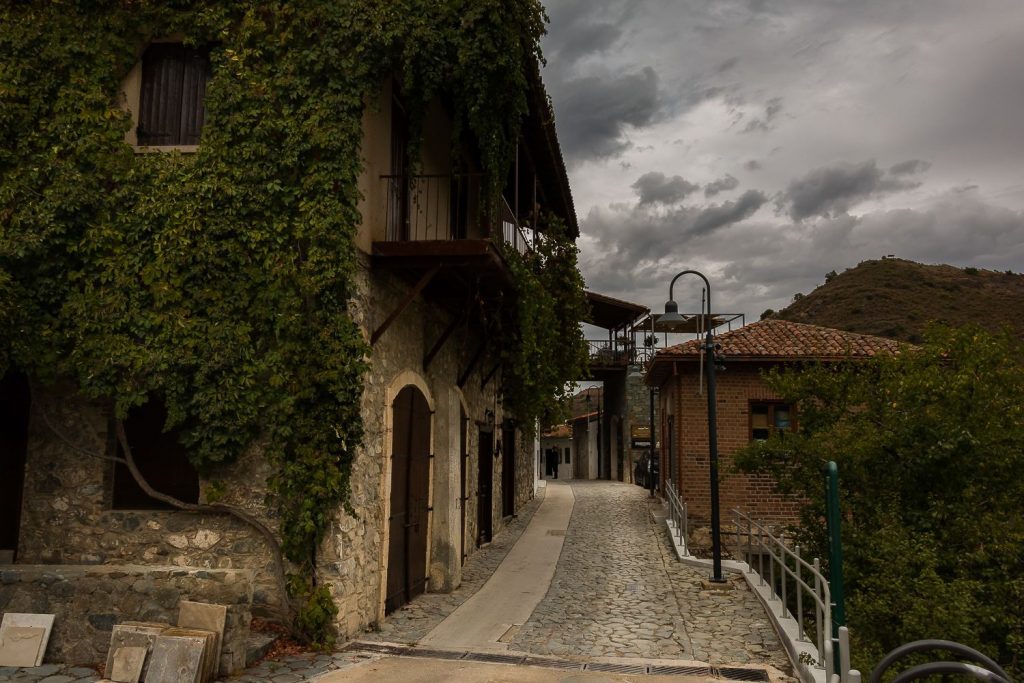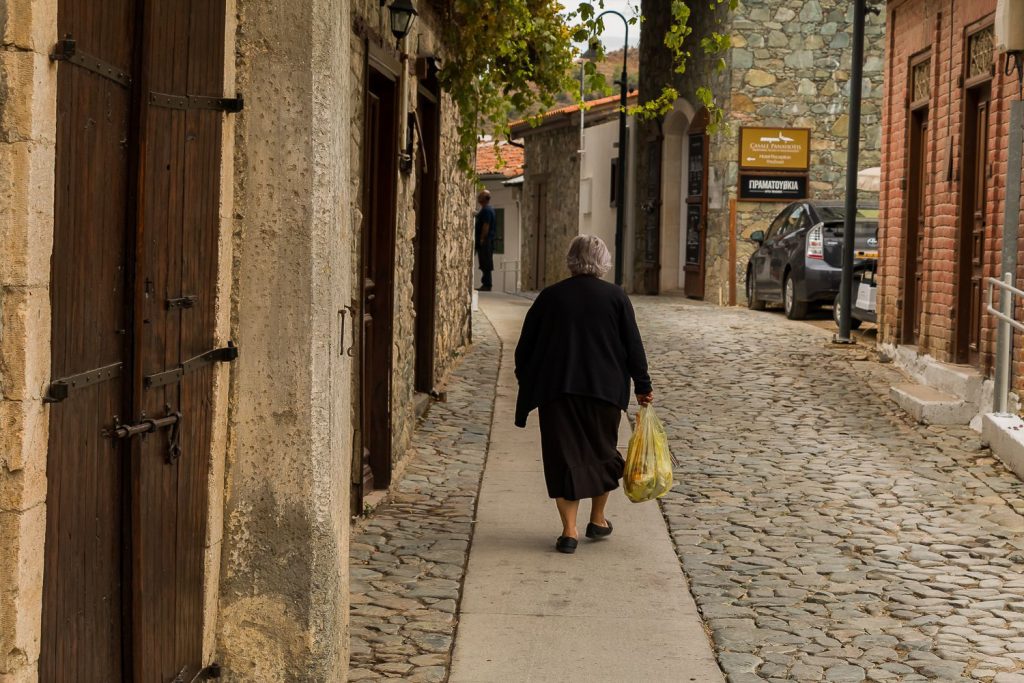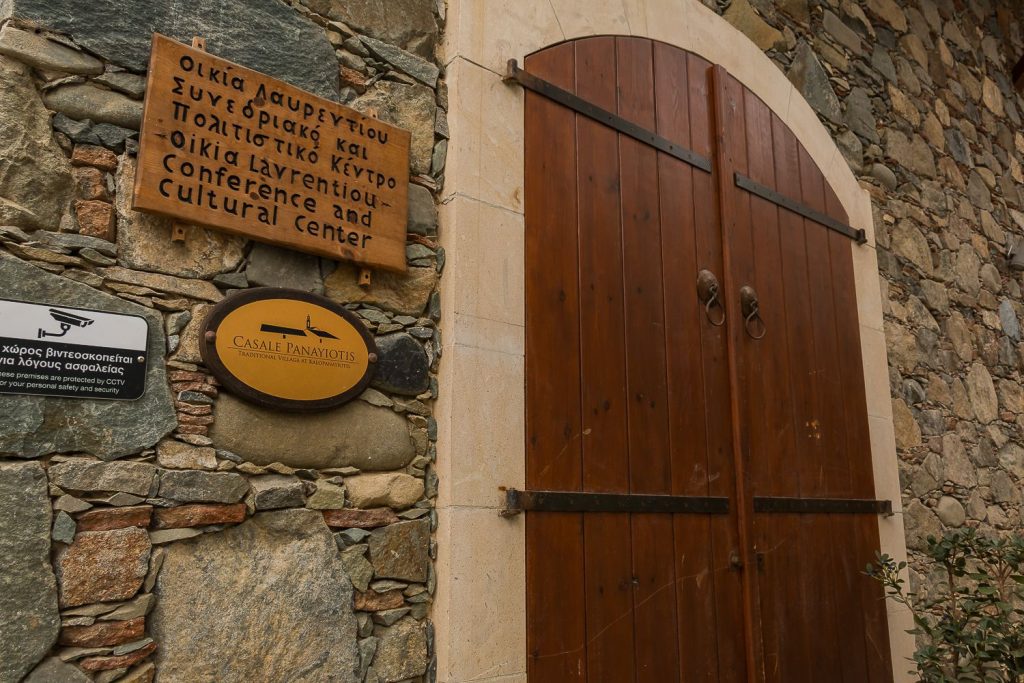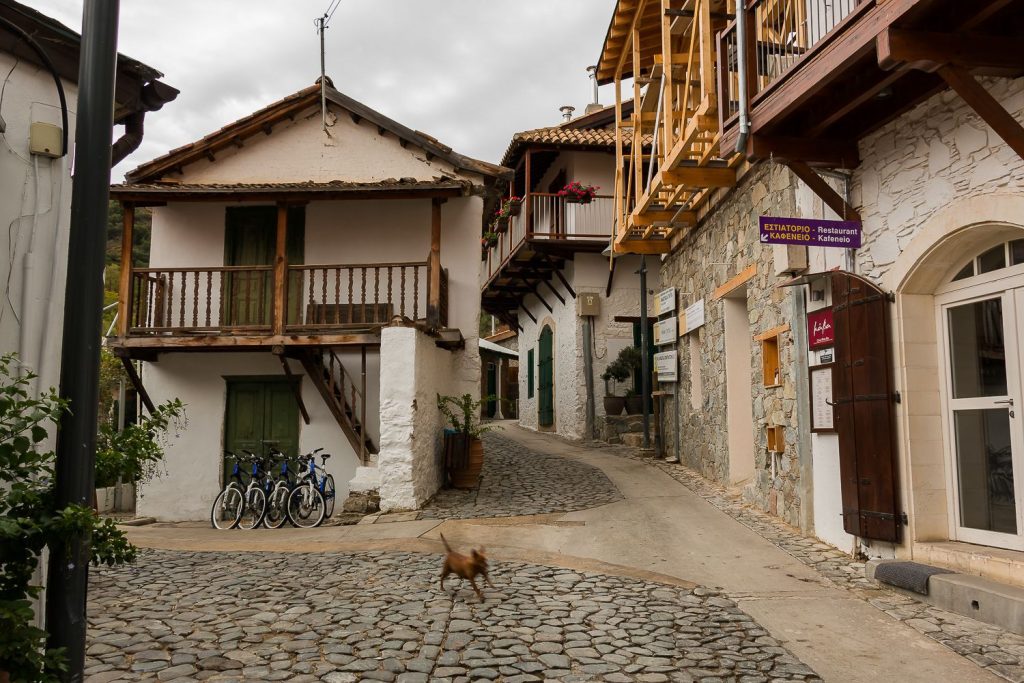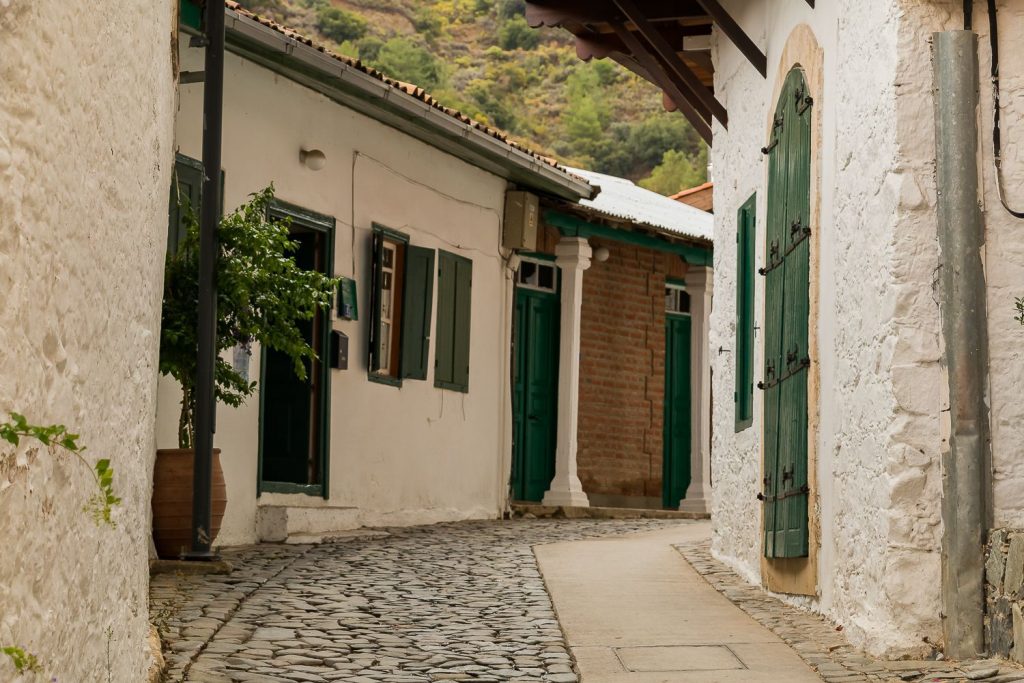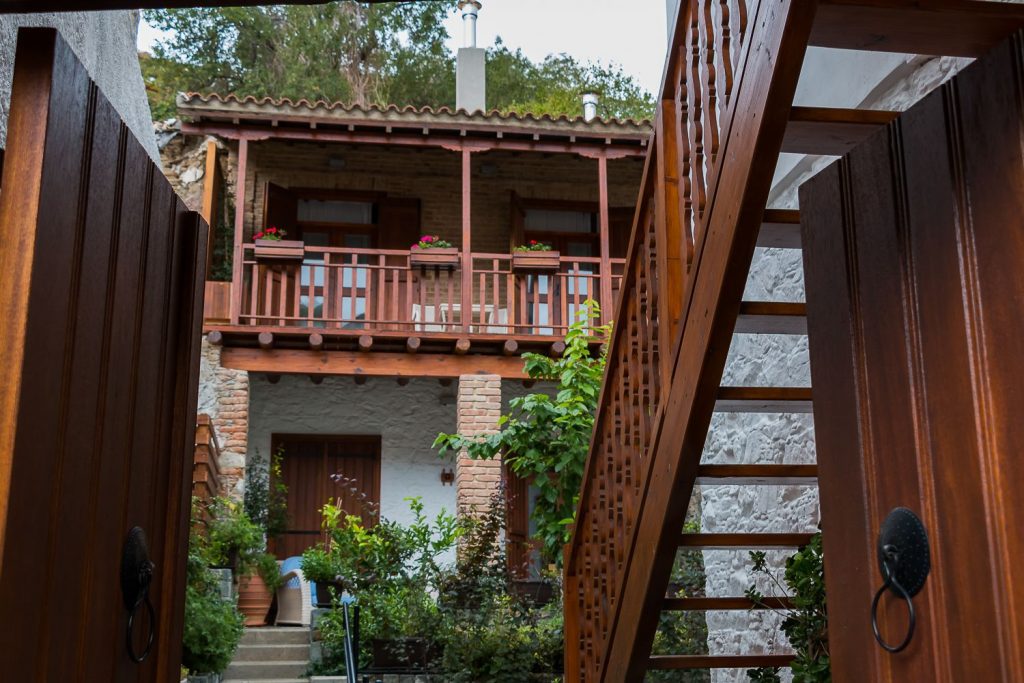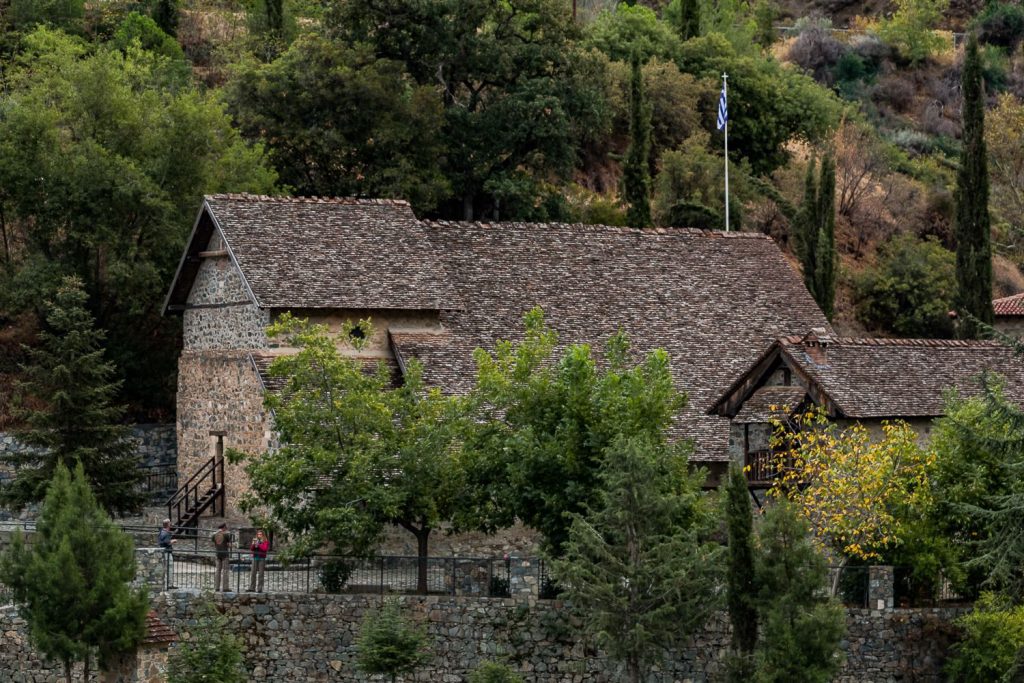Kalopanagiotis
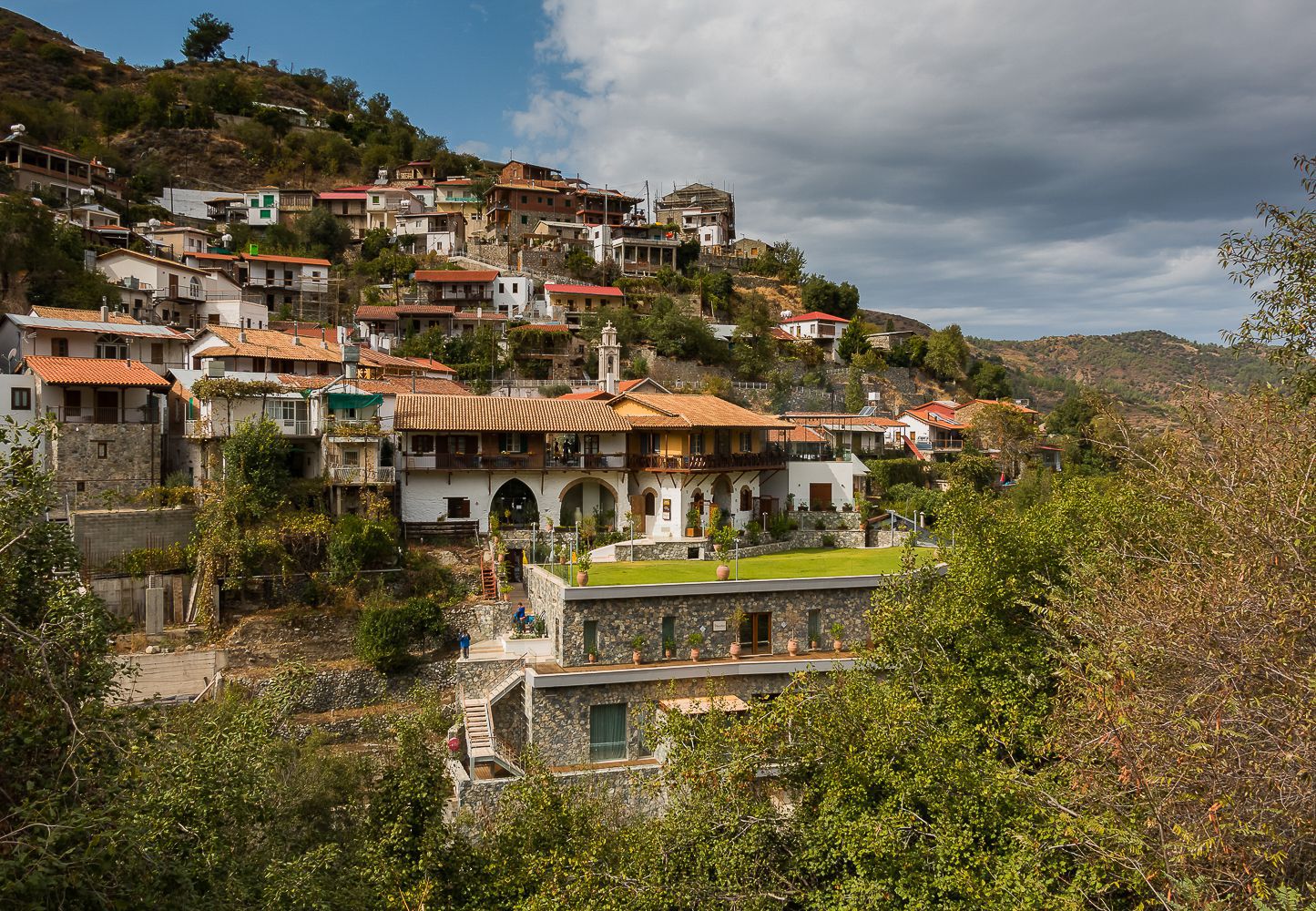
Kalopanagiotis is a Nicosian village in Cyprus and it is situated 71 kilometers southwest of Nicosia, 61 kilometers north of Limassol, 108 kilometers northwest of Larnaca and 85 kilometers northeast of Paphos.
Built at an altitude of 700 meters on the northern slopes of Troodos Mountains, Kalopanagiotis of the approximately 200 residents is one of the 14 villages of Marathasa and is undoubtedly one of the most beautiful villages in Cyprus and a model of application of European funds for the restoration of the entire settlement. It is no coincidence that in 2011 it was awarded by the European Commission with the EDEN Award as “European Destination of Excellence in Tourism and the Reform of Natural Spaces”. With amphitheatrically built two-storey renovated houses of traditional architecture, built along cobbled paths and two paved roads, with dense vineyards in the courtyards and balconies, as well as the impressive elevator that takes the travelers to the village’s core and connects the main road with the old neighborhood, Kalopanagiotis, one of the best preserved villages, offers plenty of points of interest to its visitor and is one of the most developed tourist destinations in Cyprus. The Kalopanagiotis thermal springs, the large bridge, the Kykkos watermill, the Kalopanagiotis Venetian bridge over the river, the Museum of the National Martyr Lavrentios, which houses the Cultural and Convention Center, the six Byzantine chapels and, of course, St. John the Lampadistis with the great Icons’ gallery of Kalopanagiotis, are attracting both Cypriot and foreign tourists. The many hotels, agrotourism lodges, traditional guesthouses, as well as taverns, cafes and shops that sell traditional products, make the village a center of attraction and a place worth visiting. To those who love adventure, driving a four-wheeled motorcycle offered in the village is a magnificent experience of an alternative tour of the Troodos slopes with large doses of adrenaline, while the community’s water dam is ideal for fishing (with a license by the Department of Fisheries). Next to the dam, there is a governmental fish farm, which mainly breeds trout, for the provision of other fish farms, as well as for commercial purposes and amateur fishing. The wider area has been known since antiquity, as there was during the pre-Christian period a hydrotherapy center, dedicated to the god Asclepius because of its sulphurous, thermal springs. The Asklepion, which was under the protection of the Solon kings, was converted into a Christian sanatorium along the way, and near it was built the monastery of Agios Irakleidios and later Agios Ioannis the Lampadistis. Kalopanagiotis thermal springs are located a few meters below the monastery and close to the homonymous Venetian bridge.
In the 11th century and shortly after the foundation of the monastery of St. John of Lampadistis, the first resident named Panagiotis built his house very close to the monastery, giving his name to the community, followed by other settlers who created their own families and at the same time building their own small churches. The founder Sergios built the chapel of the martyrs of Saint Sergius and Bacchus (with the icon of Panagia Glykofillousa of the 14th century), Athanassios the church of Saint Andronikos and Athanasia, the settler Georgios the church of Agios Georgios (today used as a place for the elderly), Kyriakos built the church of Agios Kyriakos, with the sixth parish being the one of the “Tzelion” (originally a monastic settlement) with the chapel of Archangel Michael (with the 1550’s gospel with a bronze lining of the 11th-12th century with the icon of Archangel Michael). The small churches are still preserved and some of them are under the protection of the Department of Antiquities of Cyprus.
The village, as it was formed by the first settlers, was a complex of small independent family farms, which were constantly growing, until the completion of the village in a continuous and unified whole after the 17th century. During the British rule, when the official mapping of Cyprus began, the village’s current name was established.
St. John the Lambadistis came from the union of three temples, Agios Irakleidios, Agios Ioannis and the chapel of the Akathistos Hymn. A building complex that is included in the UNESCO World Heritage List, the former monastery hosts St. John's head. The Saint practiced in the monastery of St. Heracleidus at the end of the 10th century, while in the south is the Kalopanagiotis Icons’ gallery. Close to the monastery is the Venetian bridge built in the 16th century, where it is believed that Saint Heracleidus was christened by the Apostles Paul and Barnabas.
Other churches are Agia Marina and Panagia Theotokou, on the “lower” street of the village. Agia Marina was the oldest chapel built by the first settler Panagiotis at the end of the 11th century and
it was replaced by today’s church in the early 20th century. The chapel of Theoskepasti is located a few meters east of Agios Ioannis the Lampadistis and was built by the monks as an ascetic lodge in the 12th century. It took its name as Theoskepasti (meaning “covered by God”) from the huge oak tree, over 700 years old, that grew around it, protecting it from hostile eyes. Indeed, tradition says that anyone who has tried in the past to cut off even a branch of wood has dealt with a great disaster. The icon of Virgin Mary of Theoskepasti of the 14th century, is preserved in the Latin chapel, which is incorporated into the temple of Saint Heracleidus and John the Lampadistis. In Kalopanagiotis the visitor leaves his car in the central parking lot of the village and can visit the village by the cable car, from the highest level of the community to the lowest, next to the monastery.

